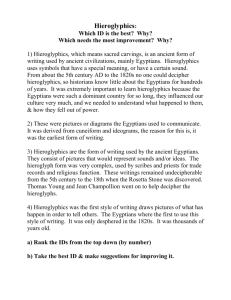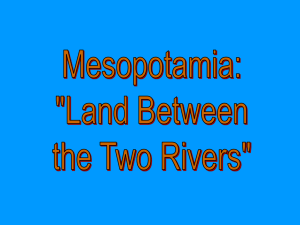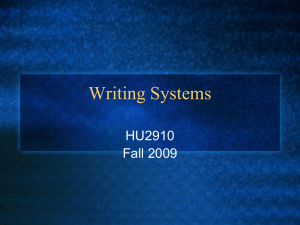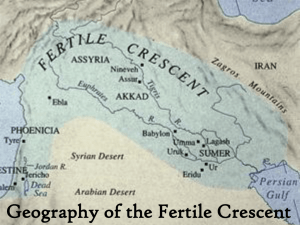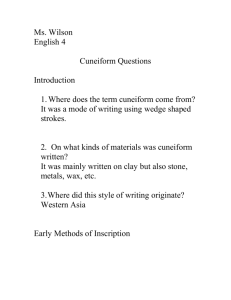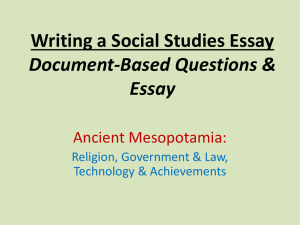"Story of Writing" Questions Answer Key
advertisement
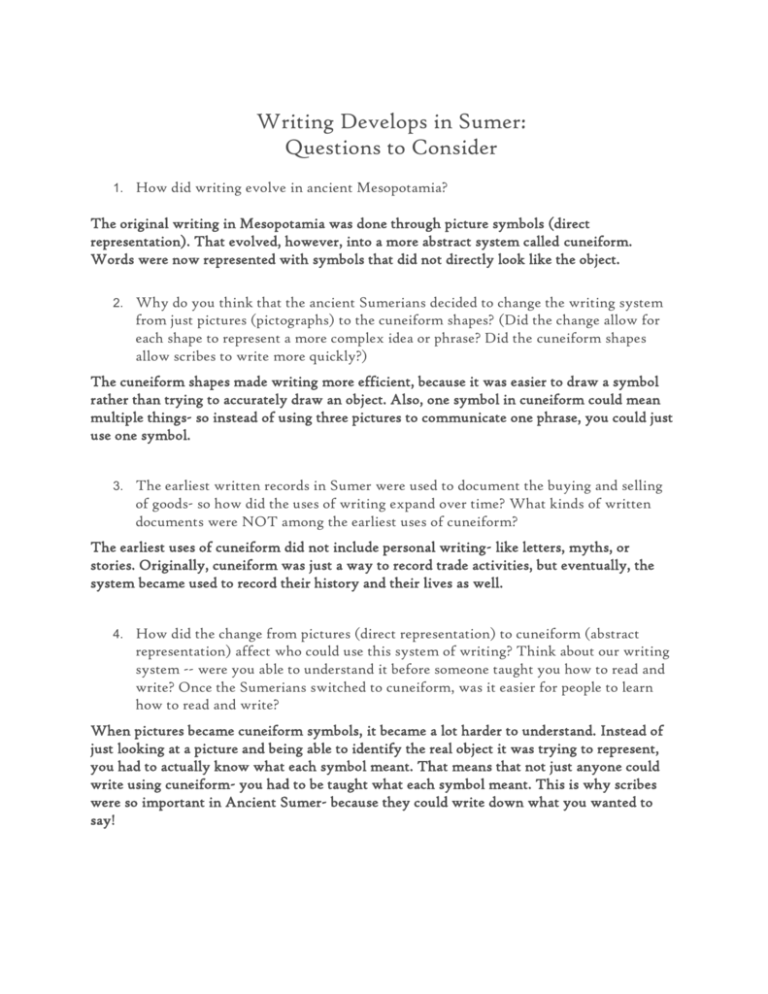
Writing Develops in Sumer: Questions to Consider 1. How did writing evolve in ancient Mesopotamia? The original writing in Mesopotamia was done through picture symbols (direct representation). That evolved, however, into a more abstract system called cuneiform. Words were now represented with symbols that did not directly look like the object. 2. Why do you think that the ancient Sumerians decided to change the writing system from just pictures (pictographs) to the cuneiform shapes? (Did the change allow for each shape to represent a more complex idea or phrase? Did the cuneiform shapes allow scribes to write more quickly?) The cuneiform shapes made writing more efficient, because it was easier to draw a symbol rather than trying to accurately draw an object. Also, one symbol in cuneiform could mean multiple things- so instead of using three pictures to communicate one phrase, you could just use one symbol. 3. The earliest written records in Sumer were used to document the buying and selling of goods- so how did the uses of writing expand over time? What kinds of written documents were NOT among the earliest uses of cuneiform? The earliest uses of cuneiform did not include personal writing- like letters, myths, or stories. Originally, cuneiform was just a way to record trade activities, but eventually, the system became used to record their history and their lives as well. 4. How did the change from pictures (direct representation) to cuneiform (abstract representation) affect who could use this system of writing? Think about our writing system -- were you able to understand it before someone taught you how to read and write? Once the Sumerians switched to cuneiform, was it easier for people to learn how to read and write? When pictures became cuneiform symbols, it became a lot harder to understand. Instead of just looking at a picture and being able to identify the real object it was trying to represent, you had to actually know what each symbol meant. That means that not just anyone could write using cuneiform- you had to be taught what each symbol meant. This is why scribes were so important in Ancient Sumer- because they could write down what you wanted to say! 5. The records of the buying and selling of goods (like barley, animals, pottery) were the Sumerian version of our modern day receipts. Who do you think would want a record of these transactions? And why would anyone want to keep these records? The records of economic transactions and trade would be useful to the government. The local government would want a record of what kind of trades took place all over the city, as well as what trade was happening with other cities. Also, by tracking your economic transactions, the government could monitor how well or how poorly your business was doing. And this information was used to tax the people of Ancient Sumer. Also, by writing down these records, the local government could keep track of who had actually paid their taxes and who still owed money.






